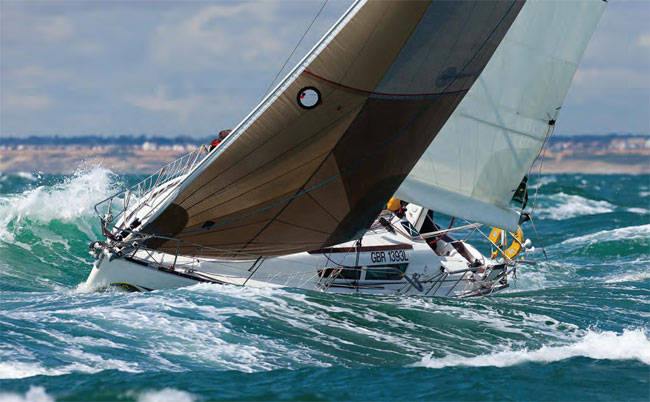

An ironic spin-off from the Covid crisis is the inevitable big boost we are already beginning to see for shorthanded inshore and offshore racing. Of course to do it well – and enjoy it – means getting the right tools...
If you have been pining for the racecourse as you watch the events calendar evaporate, the answer to getting back out on the water and possibly even racing may be closer than you think. And it’s your B&G autopilot that could not only hold the key, but provide a legal advantage that few are exploiting.
Covid-19 may have forced us to look at our sport in a different way, at least for the time being, but the shutdown has provided an opportunity to capitalise on a big change in offshore racing while providing an incentive to get back on the racecourse and try shorthanded sailing.
Just a few months ago, a full crew on the weather rail looked completely normal. Now it is unacceptable under the current social distancing rules, unless of course you are all from the same household. For most crews, adhering to the current rules with crew spaced 2m apart is clearly not practical. Neither is the prospect of reducing the crew of say a 40-footer from eight to say just three. Or is it?
Shorthanded sailing has become increasingly popular in recent years. When the 2013 Rolex Fastnet Race was won overall by a double-handed entry the sailing world took note. Since then, shorthanded fleets have grown in size and their teams have become increasingly competitive as they square up to their fully crewed rivals. All of which has led some to wonder whether an answer to the current crisis facing yacht racing lies with shorthanded rather than fully crewed racing. From here it’s clear that your autopilot, be it a Triton2 or an H5000 system might hold the key. But the benefit of using the current downtime to understand your pilot goes beyond shorthanded sailing.
Interestingly, even before the Covid crisis took a hold, the issue of autopilots had already become a hot topic in the racing scene. This year was to see a big change in RORC races where autopilots would be allowed to be used aboard fully crewed boats as well as their shorthanded competitors.
Furthermore, there are plenty in the shorthanded scene who believe that their autopilots sail faster at night than tired humans who are struggling to see the waves or the telltales.
So, if kit that is already fitted to your boat could get you around the racecourse more quickly than your competitors, there is plenty of incentive to spend the Covid downtime understanding how the pilot can get you back out on the water and up to speed for the season.
In the grand prix world, advanced autopilots are allowing Imoca60s and Ultim trimarans to achieve speeds that manual steering simply cannot match. Having complete faith in the autopilot takes a great deal of planning and experience.
The technology trickle-down is also having a big effect throughout the rest of the sport too as modern autopilots demonstrate how the game has moved on in mainstream racing.
So, to find out how to get the best out of the autopilot B&G talked to some of those who have spent years relying on their silent systems. In a mini series of articles on the B&G Blog, solo sailor Henry Bomby, Will Harris (Team Malizia), Nigel Colley (Solo Ocean Racing Club) and Matt Eeles (B&G product director) talk about how to set up your autopilot accurately and understand the key performance functions to ensure that you can exploit the benefits of a pilot whether handling the boat alone or with a full crew.
Although the objective is to understand how to get the best out of your autopilot, it is important to remember that before you even get to this part, calibrating the basic instruments is a crucial first step.
‘When we get aboard to investigate an autopilot system it is not unusual to find that the only item that has been calibrated is the echosounder depth offset,’ says B&G product director Matt Eeles.
‘Calibration of the key sensors is essential, not just as part of the normal commissioning of the yacht but before any of the data on the displays can be relied on. Here, the compass and the boatspeed read-out are fundamental to any instrument system and must be calibrated first. Without doing this, any adjustments that are made to the autopilot will be meaningless.’
Trusting and understanding your autopilot presents an advantage that would be mad to ignore.
Click here for more information on the B&G blog »
We invite you to read on and find out for yourself why Seahorse is the most highly-rated source in the world for anyone who is serious about their racing.
To read on simply SIGN up NOW
Take advantage of our very best subscription offer or order a single copy of this issue of Seahorse.
Online at:
www.seahorse.co.uk/shop and use the code TECH20
Or for iPad simply download the Seahorse App at the iTunes store


